Boosting Your Business's Financial Performance for Sale in Canada
Financial Management Performance
Boosting your financial performance requires management and a set of clear goals. We show you how, and provide cheat sheets, examples, and an AI prompt to take your business sale preparations to the next level.
You're thinking about selling your Canadian business. You understand the importance of timing and have a grasp on how business valuation works (You just landed here, want to start from the beginning on this 5 part series? Go to: "Sell My Business In Canada" and learn how to prepare your business for sale in a comprehensive guide).
Now, it's time to roll up your sleeves and focus on a critical aspect of exit preparation: maximizing your business's financial performance.
Key Takeaways: Boosting Your Business's Financial Performance
- Strong financials are essential for maximizing your sale price and attracting buyers.
- Focus on key metrics like revenue, profitability, cash flow, and debt levels.
- Take proactive steps to improve your financials and prepare for due diligence.

Consider it this way: buyers essentially invest in your business's future earnings. The stronger your financials, the more attractive your business becomes and the higher the price you can command. This isn't about short-term tricks; it's about making sustainable improvements that demonstrate long-term value.
Why Boosting Financial Performance Matters When You Say: Sell My Business In Canada
Improving your financials before selling is essential for several reasons:
- Increased Business Valuation: As we discussed in the previous article, financial performance is a key driver of business valuation. Higher revenue, profitability, and cash flow directly translate to a higher valuation.
- Attracting More Buyers: Strong financials make your business more appealing to a wider range of buyers, including strategic acquirers, private equity firms, and individual investors.
- Faster Sale Process: Well-organized and healthy financials streamline the due diligence process, leading to a faster and smoother sale.
- Stronger Negotiating Position: When your financials are strong, you're in a better position to negotiate favourable terms and achieve your desired sale price.
Fun Fact: The COVID-19 pandemic and its accompanying challenges have significantly impacted business owners and their exit plans. Approximately 40% of owners have adjusted their exit timelines: 17% have expedited their plans, frequently due to the stress they faced, while 22% have postponed their exit by at least one year, often as a result of accumulating excessive debt or witnessing a substantial decline in their business's value during the pandemic. (Source: Canadian Federation of Independent Business, CFIB).
Key Financial Metrics to Focus On
Here are some key financial metrics that buyers will scrutinize:
Revenue and Revenue Growth
Consistent revenue growth demonstrates market demand and business stability. Focus on strategies to increase sales, expand your customer base, and develop new product or service offerings.
Profitability (Gross Profit, Net Profit)
Profitability shows how efficiently your business converts revenue into profit. Focus on improving gross profit margins by managing costs of goods sold and increasing net profit by controlling operating expenses.
Cash Flow
Cash flow is the lifeblood of any business. Positive cash flow demonstrates your ability to meet financial obligations and reinvest in the business. Focus on improving collections, managing inventory, and optimizing payment terms with suppliers.
Debt Levels
High debt levels can make a business less attractive to buyers. Focus on reducing debt by paying down loans, refinancing at lower interest rates, or improving cash flow.
Practical Tips for Improving Financial Performance
Here are some actionable steps you can take to boost your business’s financial performance before selling:
- Clean Up Your Books: Ensure your financial records are accurate, complete, and up-to-date. This is crucial for due diligence.
- Optimize Pricing Strategies: Review your pricing to ensure it reflects market value and covers your costs while maximizing profitability.
- Control Expenses: Identify areas where you can reduce costs without sacrificing quality or customer service.
- Improve Inventory Management: Implement efficient inventory management practices to minimize carrying costs and avoid stockouts.
- Strengthen Customer Relationships: Focus on building strong customer relationships to ensure repeat business and generate consistent revenue.
Example: A manufacturing business could improve its gross profit by negotiating better pricing with raw material suppliers or by implementing more efficient production processes to reduce waste. They could improve cash flow by offering early payment discounts to customers or by negotiating longer payment terms with suppliers. A service-based business could increase revenue by implementing a customer referral program or by offering bundled service packages.
Khaled Baranbo recalls a business owner who significantly improved his business's value by cleaning up years of messy bookkeeping. This not only made the business more attractive to buyers but also uncovered hidden profits that had been overlooked.
Preparing Business Financials for Due Diligence
Buyers will conduct thorough due diligence, which includes a detailed review of your financial records. Ensure you have the following readily available:
- 3-5 Years of Financial Statements: Including income statements, balance sheets, and cash flow statements.
- Tax Returns: For the past several years.
- Sales and Expense Reports: Detailed records of sales and expenses.
- Contracts and Agreements: With customers, suppliers, and employees.
To help you prepare, here are some helpful checklists:
Financial Records Checklist:
| Document | Status | Notes |
|---|---|---|
| Income Statements (3-5 years) | ☐ Complete ☐ Incomplete ☐ Missing | Ensure all revenue and expenses are accurately recorded. Look for trends in profitability. |
| Balance Sheets (3-5 years) | ☐ Complete ☐ Incomplete ☐ Missing | Verify accuracy of assets, liabilities, and equity. Look for any significant changes in financial position. |
| Cash Flow Statements (3-5 years) | ☐ Complete ☐ Incomplete ☐ Missing | Analyze cash flow from operating, investing, and financing activities. Identify any cash flow issues. |
| Tax Returns (3-5 years) | ☐ Filed ☐ Not Filed | Ensure all tax returns have been filed accurately and on time. Address any outstanding tax liabilities. |
| Bank Statements | ☐ Reconciled ☐ Not Reconciled | Reconcile bank statements regularly to ensure accuracy of cash balances. |
| Accounts Receivable Aging Report | ☐ Current ☐ Overdue | Analyze the aging of accounts receivable to identify any overdue payments and implement collection strategies. |
| Accounts Payable Aging Report | ☐ Current ☐ Overdue | Analyze the aging of accounts payable to ensure timely payments to suppliers and maintain good relationships. |
Financial Improvement Checklist:
| Area of Improvement | Action Taken | Target Completion Date | Notes |
|---|---|---|---|
| Pricing Strategy | ☐ Reviewed and adjusted pricing to reflect market value and maximize profitability. | Document the rationale behind pricing decisions. | |
| Expense Reduction | ☐ Identified and implemented cost-saving measures without impacting quality or service. | Track the impact of cost-saving measures on profitability. | |
| Inventory Management | ☐ Implemented efficient inventory management practices to minimize carrying costs and avoid stockouts. | Monitor inventory turnover and identify any slow-moving or obsolete inventory. | |
| Customer Relationships | ☐ Implemented strategies to strengthen customer relationships and increase repeat business (e.g., loyalty programs). | Track customer retention rates and customer satisfaction. | |
| Debt Reduction | ☐ Developed a plan to reduce debt levels through loan repayments or refinancing. | Monitor progress on debt reduction and the impact on interest expenses. |
Expanded Example: Let’s revisit our metal fabrication business. To prepare for sale, the owner could implement the following:
- Pricing: Analyze competitor pricing and adjust their own pricing to be competitive while maintaining healthy margins.
- Inventory: Implement a just-in-time inventory system to reduce storage costs and minimize waste.
- Customer Relationships: Implement a CRM (Customer Relationship Management) system to track customer interactions and identify opportunities for repeat business.
By systematically addressing these areas, the business owner can present a much more compelling financial picture to potential buyers.
AI prompt designed to generate actionable steps for boosting financial performance
Here's a prompt designed to generate actionable steps for boosting financial performance in a plateauing Canadian industrial/manufacturing business, aimed at maximizing its sale value within 2-5 years:
Prompt:
"You are a seasoned business advisor specializing in maximizing the sale value of Canadian industrial and manufacturing businesses with annual revenues between $1 million and $4 million. This business is currently plateauing and aims for a sale or exit within 2 to 5 years. Focusing on increasing equity and improving EBITDA multiples, provide a clear, prioritized action plan that includes specific and measurable steps across the following categories:
- Revenue Growth: Identify strategies to drive sustainable revenue increases, considering the Canadian market context and potential for industrial/manufacturing businesses.
- Cost Optimization: Outline actionable steps to reduce costs, improve efficiency, and maximize profitability without compromising quality or customer service.
- EBITDA Improvement: Provide recommendations for initiatives directly impacting EBITDA, focusing on both short-term and long-term gains.
- Operational Efficiency: Suggest improvements to streamline operations, reduce waste, and increase overall productivity.
- Financial Reporting and Transparency: List specific actions to ensure financial records are accurate, transparent, and present the business in the most favorable light for potential buyers.
- Key Performance Indicators (KPIs): Recommend specific KPIs the business should track to monitor progress, along with targets for each KPI within the 2-5 year timeframe.
For each action, specify:
- Actionable Step: What exactly needs to be done.
- Timeline: When it should ideally be completed (e.g., immediate, 3 months, 1 year).
- Responsible Party: Who should oversee the implementation.
- Measurable Outcome: What results would indicate success.
Emphasize strategies that will directly appeal to potential buyers in the Canadian market and increase the business's attractiveness. Consider common due diligence requirements and provide recommendations to mitigate risks. Assume the business is already established with a stable customer base, but is not currently growing at the desired rate. Focus on practical, achievable steps that can be implemented within the given timeframe."
Why this prompt works:
- Specific Role: It assigns the role of a seasoned advisor, guiding the response towards expert recommendations.
- Clear Goals: It explicitly states the goal of maximizing sale value, equity, and EBITDA multiples.
- Targeted Business Profile: It specifies the industry, size, and geographical context, making the response relevant to your specific needs.
- Actionable Approach: It focuses on concrete, measurable action steps rather than vague suggestions.
- Categorization: It breaks down the task into key categories for easier management and comprehensive coverage.
- Emphasis on Measurable Results: It requires clear timelines, responsible parties, and measurable outcomes, making the plan easy to implement and track.
- Buyer Perspective: It explicitly asks for strategies that will appeal to potential buyers, ensuring the focus is on actions that increase value for sale.
- Practical Focus: It emphasizes achievable steps within the 2-5 year timeframe and considers the need to mitigate risks highlighted by due diligence processes.
How to use this prompt:
- Copy and paste the prompt into your chosen AI platform.
- Review the output carefully. It should provide a good starting point for your plan.
- Critically evaluate the suggestions and make adjustments based on your specific business situation.
- Prioritize and break down the recommended actions into more detailed tasks for implementation.
This prompt should provide a robust and actionable plan to boost your business's value and position it for a successful sale. Good luck!
Recap: Boosting Your Business's Financial Performance
- Strong financials are essential for maximizing your sale price and attracting buyers.
- Focus on key metrics like revenue, profitability, cash flow, and debt levels.
- Take proactive steps to improve your financials and prepare for due diligence.
Next step:
Now that you understand how to boost your financial performance, it's time to consider the legal and tax implications of selling your business. Click here to learn more: "Legal and Tax Considerations for Selling a Business in Canada".
Have Questions? We've Got Answers
Get in this queue for a whale’s tail. They are a beauty, eh
We just wanted to say hi and thanks for stopping by our little corner of the web. :) “Go ahead and eat your elephant ears on the chesterfield. I’ll come sit with you as soon as I take these runners off.” But, alas, this is the Internet.
However, we think you'll love our email newsletter about building value and properly position your manufacturing company before transition/exit your business.
As a special welcome gift for subscribing, you'll also get our helping and educational guides, tips, tutorials, etc.. for free.
It's filled with the best practices for retiring serial business owners like Joseph-Armand Bombardier, John Molson, Warren Buffett and many more.
Just sign up for our emails below.



